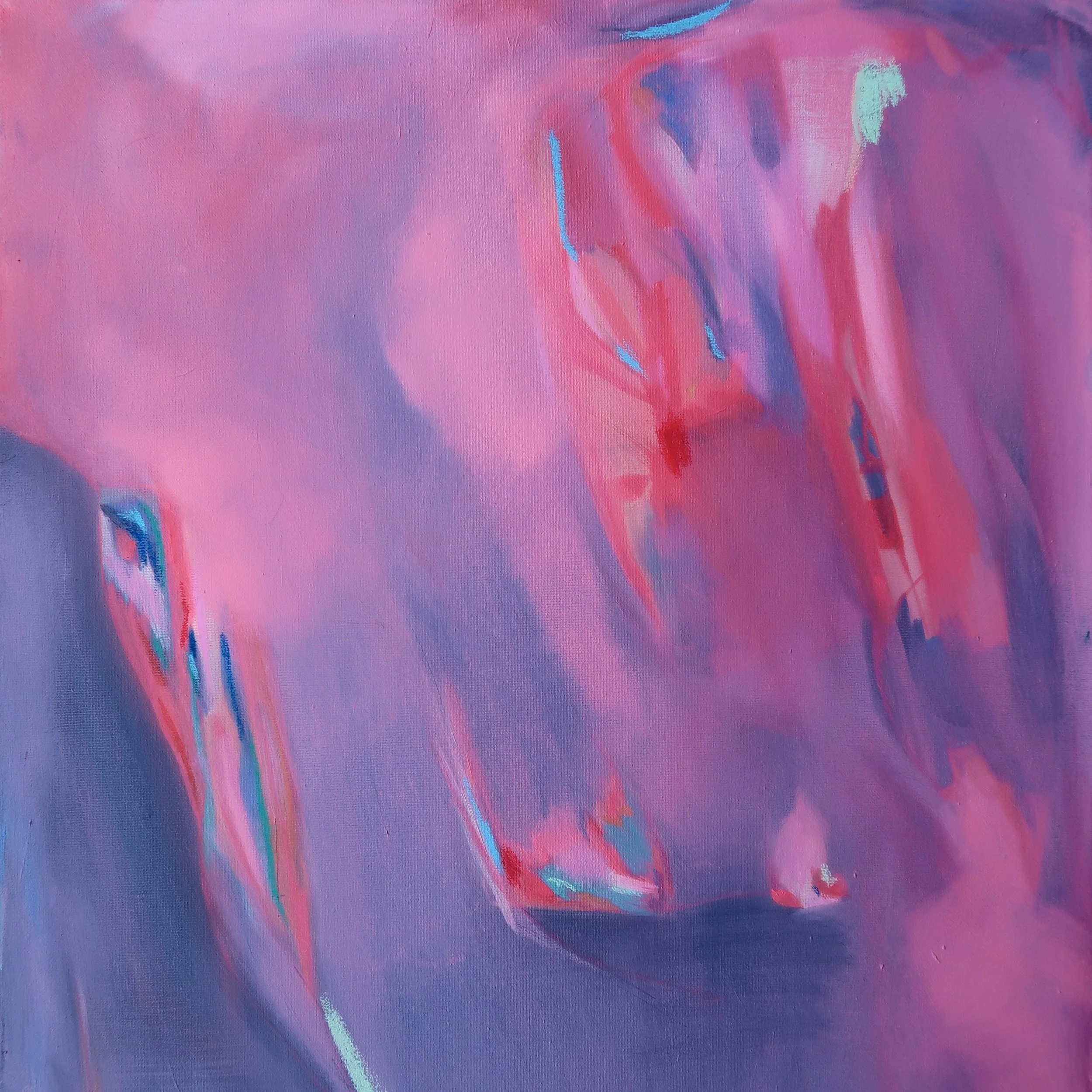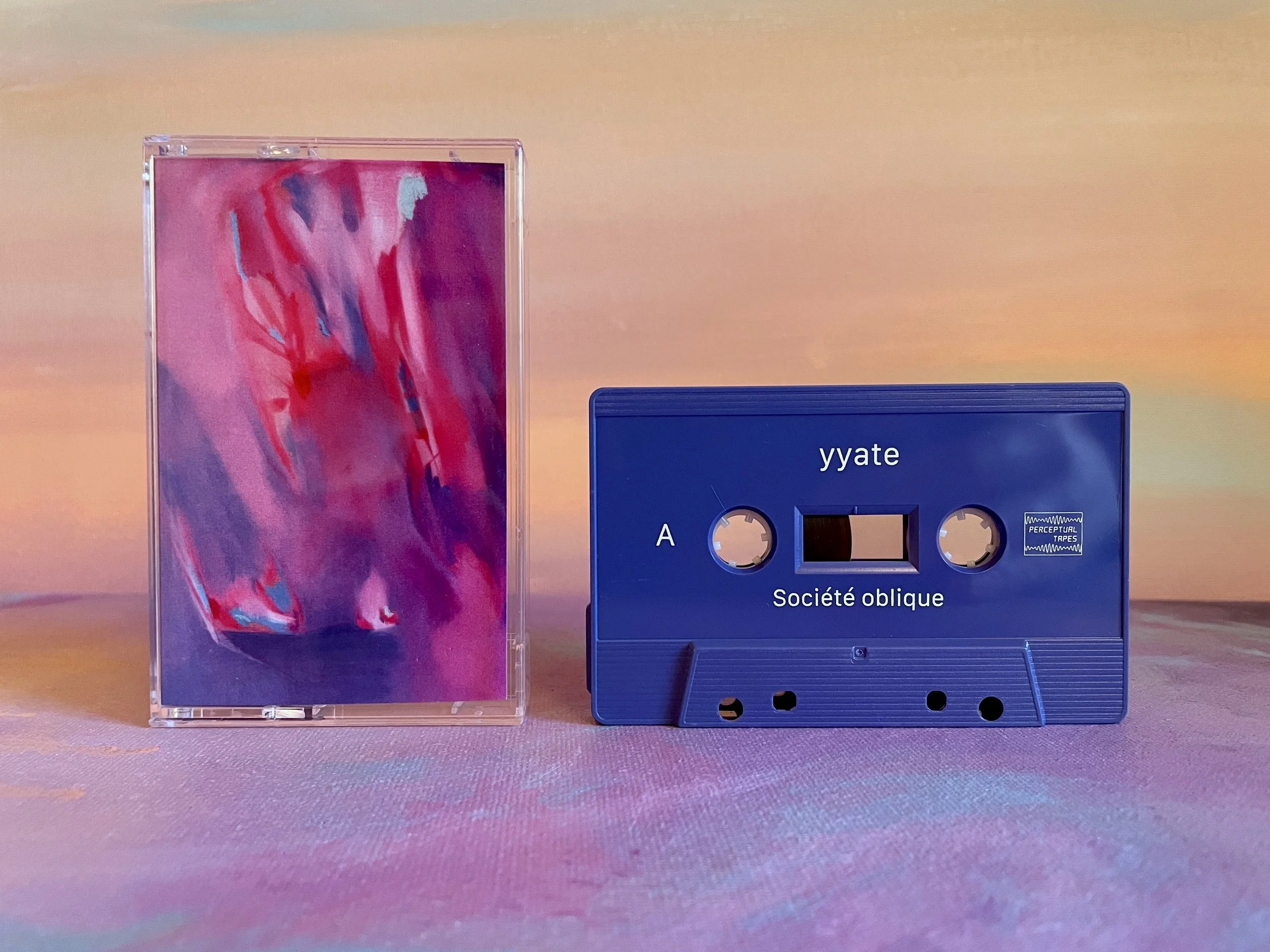Société oblique is the new album by French sound artist yyate. Unbound by convention or genre, the record blends computer music, years of accumulated field recordings and delayed attempts at rhythm, blurring the line between the natural and the synthetic.
Seaside waves morph into digital noise, unidentified electronics bubble, crinkle and hiss, and bursts of sub-bass punctuate the soundscapes. The result is a collection of immersive sonic environments that shift between shimmering textures and fractured spaces.
According to the artist: ‘Yyate is a vacant lot. Lost between mediterranean shores, volcanoes, huge pine forests. A big pile of metal objects looking to meet each other. The light is never far away.’
Credits
Music produced by Vincent Caylet
Mastering and layout by Timothy Allen
Artwork by Elise Wilson
© 2025 Vincent Caylet & Perceptual Tapes
Reviews
French sound artist and audio collage sculptor yyate (aka Vincent Caylet) assembles loose soundscapes, field captures, and meandering data streams in a collision of noise and ambient haze via Société oblique on Perceptual Tapes. Hovering at the intersection of abstract electronics and sonic mirage, the album unfolds through microscopic blips and bleeps, surreal plateaus of tone, and cascading aural fluctuations—saccharine, docile, and deeply immersive.
Opening with “Oblique part one,” a sleek transmission sets the mood, unraveling minimal, nearly translucent sound shapes whose rhythms melt into sheets of static and sonic detritus (“Oblique part two”), or drift with featherlight flutter (“Oblique part four”). These sounds don’t shout; they dissolve.
As the sequence progresses, sonic clusters begin to loosen. Buried beneath the surface lie fragments that shimmer and shift—tracks like “Oblique part six” and “Oblique part eight” stumble upon rhythm amid warped audio echoes, brittle aural morsels, and shimmering debris. Here, sound feels untethered from time, each layer arriving with a fragility that borders on the ghostly.
The real beauty of Société oblique lies in its restraint. Caylet doesn’t crowd the canvas; he sketches with silence, allowing negative space to breathe between fluttering signals and fractured pulses. It’s in these gaps—those liminal, nearly imperceptible transitions—where the album reveals its deepest emotional textures. Every rustle, hiss, and decaying tone is placed with precision, as if capturing a fleeting signal from some distant, slow-moving frequency.
Arguably among the year’s most refined works of static-laced beauty, final pieces “Oblique part nine” and “Oblique part ten” scatter across the listening field like post-storm haze—distant, delicate, and full of lost transmissions. This is a work of serene disarray, quietly ambitious, elegantly restrained, and incredibly easy to drift within—a masterclass in ambient minimalism, where absence is as powerful as presence.
Pietro Da Sacco
//
Société oblique [is] kind of a strange album in the manner of its construction. It blends a variety of different sound sources together in an amalgam spread out of over ten free form pieces of music, all of which are named after the album and then parts one through ten. Some of the pieces we can loosely categorize as ambient with small tonal elements and spacious pads. But most of the compositions here purposefully defy expectations or categorization. The third track fits this description well as it contains a bit of sweeping atmospherics as reverberations collide into on another, but it also contains something that I can only describe as audio detritus. It feels like that audible equivalent of standing in a mostly empty parking lot and watching discarded cans and plastic bags swirl in the wind around you. The sixth track keeps up with a similar motif but feels slightly busier in most respects, most notably the element of the audio detritus as it feels less like it is being swirled by wind and it is being sorted chaotically.
But there’s also something magnetic and yet elusive about the more tonal aspects of this album. While I certainly am always a big fan of abstract noises and field recordings, the slightly fractured character of the tones really resonate and add some kind of difficult to describe depth to what I’m hearing. Track nine is on of my favorite examples of this as what could loosely be called its lead has this small feeling presence that is somehow magnified by its slightly cracked and distorted nature. The fifth track has a similarly situated tonal element as well but it filters into the more atmospheric elements with a more seamless quality, less chaotic and smoother.
For me, it’s the variety in the pieces as well as their flowing nature. They rarely attempt to form a real recognizable and instead opt to lean in a certain level of liminality. The soundscapes never paint a clear picture of where you’re supposed to be, but instead gives flashes of colors and textures, with the only the most fleeting of imagery. The soothing sonic chaos at play here is truly top notch.
Lars Haur


